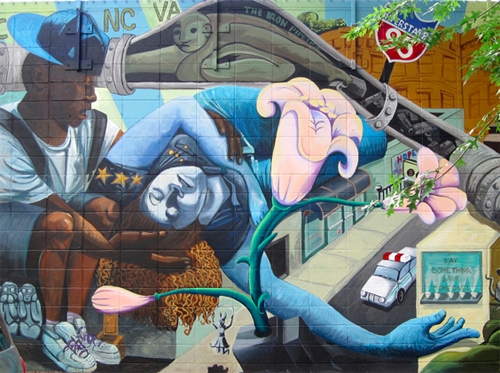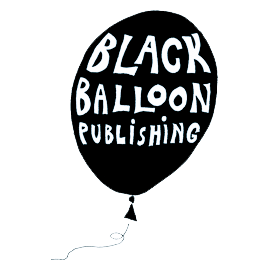
I don't know whether Maurice Sendak ever explicitly said that imagination should never be limited by false notions of absurdity or risk, but as a kid sprawled out on the floor reading and rereading his books, especially In the Night Kitchen and Where the Wild Things Are, this is what he taught me. The internet does tell me he said the following: “I refuse to cater to the bullshit of innocence.”
I had enough unsentimental adults orbiting my childhood that one of them very well could have told me this. It would have gone over my head at age six or seven. But when you watch a drunk make an ass of himself, hear the laughter elicited by a joke that shouldn’t have been told, or through thin walls hear moans of pleasure that you are years off from appreciating, what you do come to understand, though you cannot yet articulate it, is that life ain't all Green Eggs and Ham.
I’m grateful for coming to this realization early on, thanks to the lovingly irreverent family and family friends who shaped me and allowed me to appreciate Sendak’s stories in all their naked, doughy, beastly glory. As these books make clear, adults can be jerks, escape beats confinement, and "Childhood is cannibals and psychotics vomiting in your mouth!" (The latter was quoted by Art Spiegelman in a 1993 New Yorker strip.) They speak to a truth that the child me did not realize I’d been lied to about yet. I wasn’t old enough to go out anywhere further than the yard, and in truth I never actually wanted to run away. But losing myself in my thoughts and delusions, I could see that this was normal and healthy, something that shouldn't be thought of as a waste of time but a crucial part of being alive.
Like most adults, I still daydream like a kid, though I sometimes wish those mental escapes did not end so abruptly thanks to some adult obligation. But that bullshit is a real part of life, the same as trying to imagine it away. Maurice Sendak’s best work exists in that space between the two worlds, an alchemy of the real and imaginary, which is why it resonates with so many of us.
Image: collider.com

The day I showed up in a moving truck with ten of my similar-looking friends, a woman on my building’s stoop commented not so quietly into her phone, “All these white people got the wrong building.” No wonder: according to a recent New York Times article, the number of people like me in Crown Heights, Brooklyn, has grown 15 percent over the last decade, driving up rent prices 36 percent in 2011 alone. Naturally, as we flood in, others head out.
Read MoreThere are few things in contemporary pop culture that elicit my fight-or-flight instincts more acutely than My Little Pony and dubstep. Yet Jason Kottke's thorough followup to a New York Times correction—which had misnamed a particular Pony character—magnified my worst grade-school fears by combining the two. Apparently, there exists this horrifying, fist-pumping subgenre called "dubtrot," i.e. My Little Pony dubstep remixes. The sadomasochist in me just had to investigate further.
My Little Pony—specifically My Little Pony: The Movie—tarnished my childhood. The trouble began with an absolutely frightening film poster, depicting this purple ooze monster called The Smooze attacking the Ponies' Dream Castle. Stay with me here. Though I was young, I distinctly remember being coerced into the theater by my sister. Visions of surly, singing ooze consumed my dreams that night. By age 10, I was readingFangoria.
I rewatched My Little Pony: The Movie to see if it carried the same shock value as it had two decades' prior. A: no. The Ponies—with names like Lickety-Split or Shady, denoted by the ice-cream cone or sunglass tattoos on their respective asses—hurl rainbows (though not unicorn poop) at the evil ooze, saving their kingdom. Hell, Danny DeVito gets lead credit, voicing the Grundle King (choice quote: "I try not ta mention it too often! Witches! Smooze! It was terribuhl!"). Granted, De Laurentiis Entertainment Group distributed Maximum Overdrive and Blue Velvet the same year. And that sequence when the witches are rowing a pantaloons-propelled skiff over waves of Smooze, singing "Nothing Can Stop the Smooze" to a barbershop-style chorus…that's still creepily upbeat.
Speaking of creepily upbeat, let's talk "dubtrot." Kottke mentions "Rainbowstep," which I guess is a good primer for newbies. It's a Youtube clip, a blessing and curse to the post-MTV generation, as we get strobey visuals with the seismic beats and chirpy Pony dialogue. "Cuz Dubstep with Rainbows is 20% Cooler!!! XD" writes uploader—and purported My Little Pony fanboy "brony"—ZestyArt, crediting the track (or its inspiration/style?) to Skrillex, dubstep's macho-ass posterboy. Now me, I'm in crooner/producer James Blake's camp, thanks in no small part to my NYC muse's insistence. One might "dub" Blake's enveloping atmospherics as post-dubstep, but if he calls out Skrillex's antics "without naming him," then I'm taking Blake's side.
Frat boys killed big beat, so it's no shocker those same meatheads took to Skrillex's inelegant steroidal “brostep” like Flutter Ponies to glitter. I can't credit Skrillex for dubtrot's saccharine ear-trauma (he'd sooner produceKorn's new album), and I love me some bass, like Richie Hawtin's classically ferocious live sets, replete with viscera-rearranging throbs and mind-splintering breaks.
Still, Hawtin throwing some credibility at Skrillex's Mickey Mouse beats makes me a bit vexed. The former screamo kid ain't even good enough for the bronies.
Image: DubTrot's SoundCloud avatar






 A Black Balloon Publication ©
A Black Balloon Publication ©